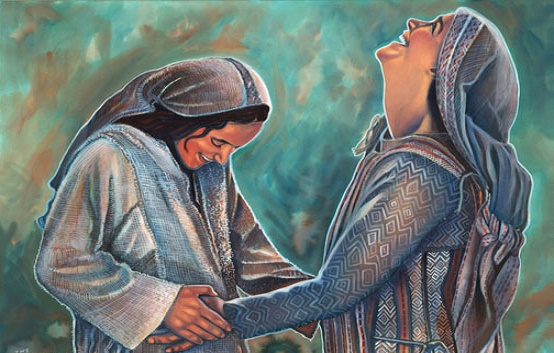
Dec. 22, 2022 – Luke 1:46-56
The Canticle of Mary was for early Christian communities one of the canticles that demonstrated the awareness and firmness of the faith that animated them internally. Sung in communities, this canticle teaches how to pray and how to sing.
With the “Magnificat” Mary places herself on the side of the anawim, the ‘poor of God,’ those who ‘fear God’ placing all their trust and hope in Him and who on the human level enjoy no rights or prestige. The spirituality of the anawim can be summarized by the words of Psalm 37:79: “In silence stand before God and in him hope,” for “those who hope in the Lord will possess the earth.” In
Psalm 86 in v. 6 the speaker, addressing God, says, “Give your servant your strength”: here the term ‘servant’ expresses his being submissive, as well as the feeling of belonging to God, of feeling secure with him. The poor, in the strictly biblical sense, are those who place unconditional trust in God; that is why they are to be considered the best part of the people of Israel.
The proud, on the other hand, are those who put all their trust in themselves.
Now, according to the Magnificat, the poor have a thousand reasons to rejoice, because God glorifies the anawim (Ps. 149:4) and lowers the proud. An image taken from the NT, which translates very well the attitude of the poor in the OT, is that of the publican who humbly beats his breast, while the Pharisee smugly consumes himself in pride (Lk 18:9-14).
Mary’s words celebrate how much God has worked in her and how much he works in every believer. Joy and gratitude characterize this hymn to salvation that acknowledges God’s greatness but also makes those who sing it great.
Finally, Mary describes the biblical story of salvation in seven actions of God. The use of verbs in the past tense refers not only to what God has already done in the Old Testament, but also to what He has accomplished in the New, because the Song, composed by the Christian community, sings of God’s work in the light of Christ’s resurrection that has already taken place. In the person of all the poor waiting for salvation, Mary recognizes and rejoices with the greatness of God (Habakkuk 3:18), for she saw the humiliation of her poor people and came to deliver them from the eyes of all (1 Sam 1:11). In fact, the greatest glory and testimony of God’s holiness and mercy is that he himself took on the plight of the poor, to set them free, giving efficacy to their struggle (Deut. 10:21; Psalm 103:17).
The Magnificat testifies to the joy of the poor who wait and trust in God’s action. But God himself waits for the poor to learn with him to become his instruments in the realization of justice that liberates. Tagore said, ” Human history waits, with patience, for the triumph of the humiliated man.”
For good workers…
– The Magnificat expresses Mary’s joy and gratitude because the Almighty did great things in her, a simple and humble girl. God also does great things for us if like Mary we accept his will.
– The passage is full of joy, especially because Mary recognizes that God has acknowledged the presence of a simple girl living in a small place – in the eyes of the world an unimportant person. But, when it comes to God, everyone is of equal importance.
P JOBY KAVUNGAL RCJ

